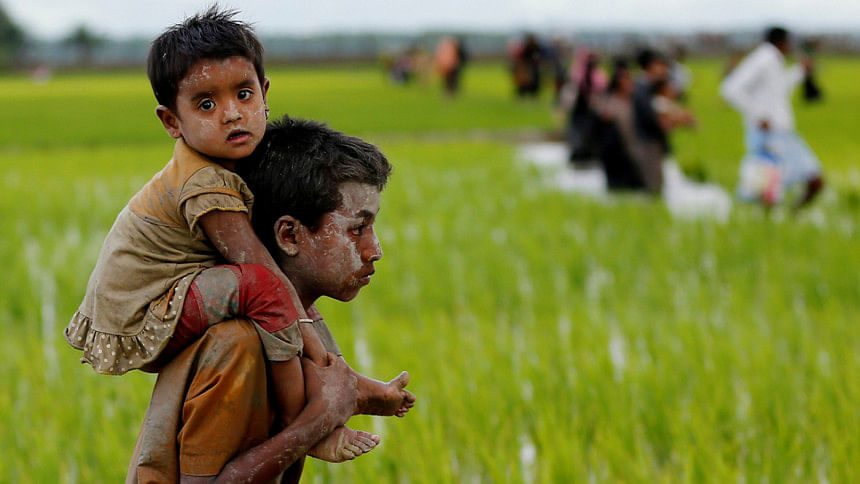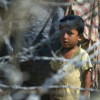Amnesty releases satellite images of burning Rohingya villages

Amnesty International says it has turned up evidence of an "orchestrated campaign of systematic burnings" by Myanmar security forces targeting dozens of Rohingya villages over the last three weeks.
The human rights group is releasing a new analysis of video, satellite photos, witness accounts and other data that found over 80 sites were torched in Myanmar's northern Rakhine State since an Aug. 25 militant attack on a border post. The UN children's agency estimates that as many as 400,000 people have fled to Bangladesh since then.
Top UN officials, including Secretary-General Antonio Guterres, have previously expressed concerns about possible "ethnic cleansing" perpetrated against the Rohingya. But Amnesty's findings released Friday in Myanmar offer some of the most precise evidence that Rohingya areas were specifically targeted.
The satellite images, contracted by Amnesty from satellite providers Deimos and Planet Labs, and other source materials point to "80 large-scale fires in inhabited areas, each measuring at least 375 meters (1,230 feet) in length" since Aug. 25, the group said.
The data adds to many accounts of villages being burned from refugees who spoke to UN agencies, rights groups and journalists in Bangladesh.
"The evidence is irrefutable — the Myanmar security forces are setting northern Rakhine State ablaze in a targeted campaign to push the Rohingya people out of Myanmar," said Tirana Hassan, Amnesty International's crisis response director, in a statement.
"There is a clear and systematic pattern of abuse here. Security forces surround a village, shoot people fleeing in panic and then torch houses to the ground," she said. "In legal terms, these are crimes against humanity."
The International Criminal Court says crimes against humanity involve torture, enslavement, murder or extermination of civilians in a "widespread and systematic" way.

Hassan also took issue with claims by Myanmar's government that the Rohingya themselves were setting ablaze their homes.
"The government's attempts to shift the blame to the Rohingya population are blatant lies," she said. "Our investigation makes it crystal clear that its own security forces, along with vigilante mobs, are responsible for burning Rohingya homes."
Myanmar authorities have curtailed access for journalists and human rights experts to Rakhine in recent months, and Amnesty acknowledged that the breadth of the damage cannot be verified on site. It said the full extent of destruction "is likely to be much higher" than the evidence compiled because cloud cover sometimes blocked the satellite views.
The UN-backed, 47-country Human Rights Council in Geneva is expected to take up a discussion on Myanmar on Monday.

 For all latest news, follow The Daily Star's Google News channel.
For all latest news, follow The Daily Star's Google News channel. 








Comments